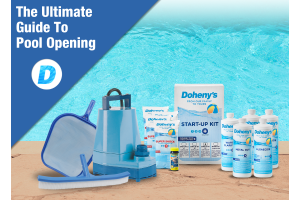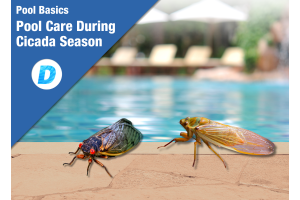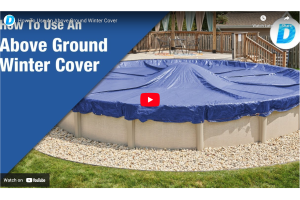How to Balance Pool pH Levels
Pool owners already know that there are a lot of different chemicals that go into achieving perfectly balanced pool water. pH level is one of the things that can be most intimidating when it comes to water chemistry. In fact, just the mention of pH makes many customers’ palms sweat, perhaps taking them back to their days in chemistry class. But the truth is that it’s not that complicated. Let’s talk about how to balance the pH level in your swimming pool, and we won’t even have to revisit high school.
What is pH?
pH is the measure of how acidic or basic a solution is. pH is measured on a scale from 0-14, with 7 being neutral.The ideal pH for a swimming pool is between 7.4 and 7.6. A pH level below 7 is acidic, while a pH above 7 is basic, or alkaline. Acidic solutions are under-saturated and corrosive, while basic solutions are over-saturated. An example of an acidic substance is lemon juice. Laundry detergent is an example of a basic substance.
Why Does Pool pH Matter?
Now that you understand what pH is, you may be wondering why it matters in your swimming pool. There are several reasons that it is important to maintain proper pH levels.
- Improper pH levels decrease the effectiveness of sanitizers such as chlorine and bromine in your pool.
- Low pH causes corrosion of pool equipment and pool surfaces and can lead to eye and skin irritation.
- High pH levels can lead to cloudy water and formation of scale on the pool’s surfaces.
How to Balance pH in Your Pool
- Test the water
- Using a high quality test kit or test strips, test the pH level in your pool.
- Add pH balancing chemicals
- Be sure to keep the pool pump running when adding pool chemicals so that they can evenly distribute throughout the water.
- If the pH is too low: Add soda ash (sodium bicarbonate), which is a pH increaser, at a rate of 1 lb per 10,000 gallons of water. We recommend Doheny’s pH Plus.
- If the pH is too high: Add muriatic acid or sodium bisulfate to lower pH levels. Be sure to wear proper safety equipment and follow the manufacturer's instructions. pH decreasers should be diluted in water before adding to the pool. Always add these chemicals to the deepest part of the pool, away from skimmers and fixtures. We recommend Doheny’s pH Minus.
- Retest the water
- Wait four hours after adding chemicals, then retest the water and add more as needed until proper pH levels are achieved.
Helpful Hints for pH Balanced Pool Water
- When you change the pH in your pool water, you are also changing the total alkalinity. Always test both levels after making any adjustments to pH or total alkalinity.
- High free chlorine levels can cause errors in your pH test. If chlorine levels are above the recommended 1 - 2 ppm, wait until they come down to the optimal range and then retest the pH.
- If the pH in your swimming pool water is way off, do not add excessive amounts of chemicals all at once. Add the recommended dose, wait to retest and then add more as needed to avoid over-treating your pool.
Complete Water Chemistry for Clear Water
As we have mentioned, pH is not the only thing that needs to be balanced in order to achieve sparkling clean pool water. Pool water is balanced when the pH, alkalinity, calcium hardness, chlorine, and stabilizer levels are within the following ranges:
pH: 7.4 - 7.6
Total alkalinity: 80 - 120 ppm
Calcium hardness: 200 - 400 ppm
Stabilizer (cyanuric acid): 20 - 50 ppm
Free chlorine: 1 - 2 ppm
Now that you understand why and how to balance the pH in your swimming pool water, you are one step closer to becoming a pool maintenance expert. When you learn to DIY your pool chemicals, you can save yourself lots of money throughout the year, and gain a real sense of knowledge and satisfaction out of the process. For a more in depth look at how to maintain pool water chemistry, check out our handy guide to pool chemicals.
If you have questions about how to balance your pool water, or need help with any of our products, contact our friendly pool experts today at 800-574-7665 or visit us online at doheny.com.






